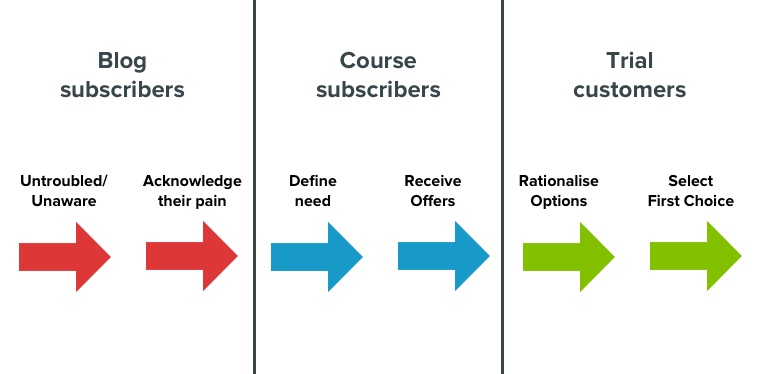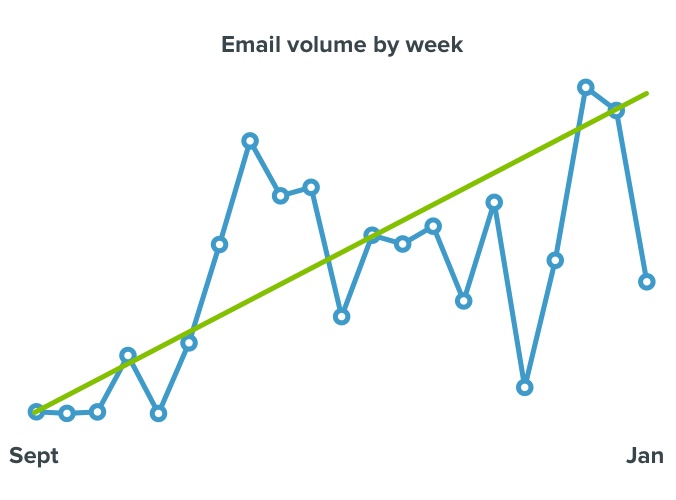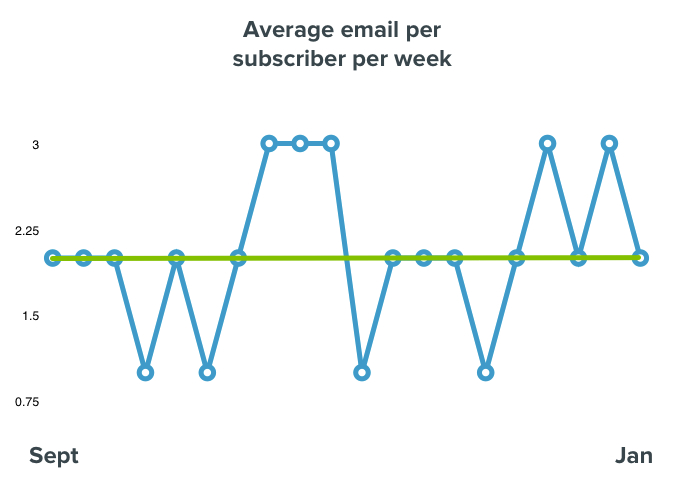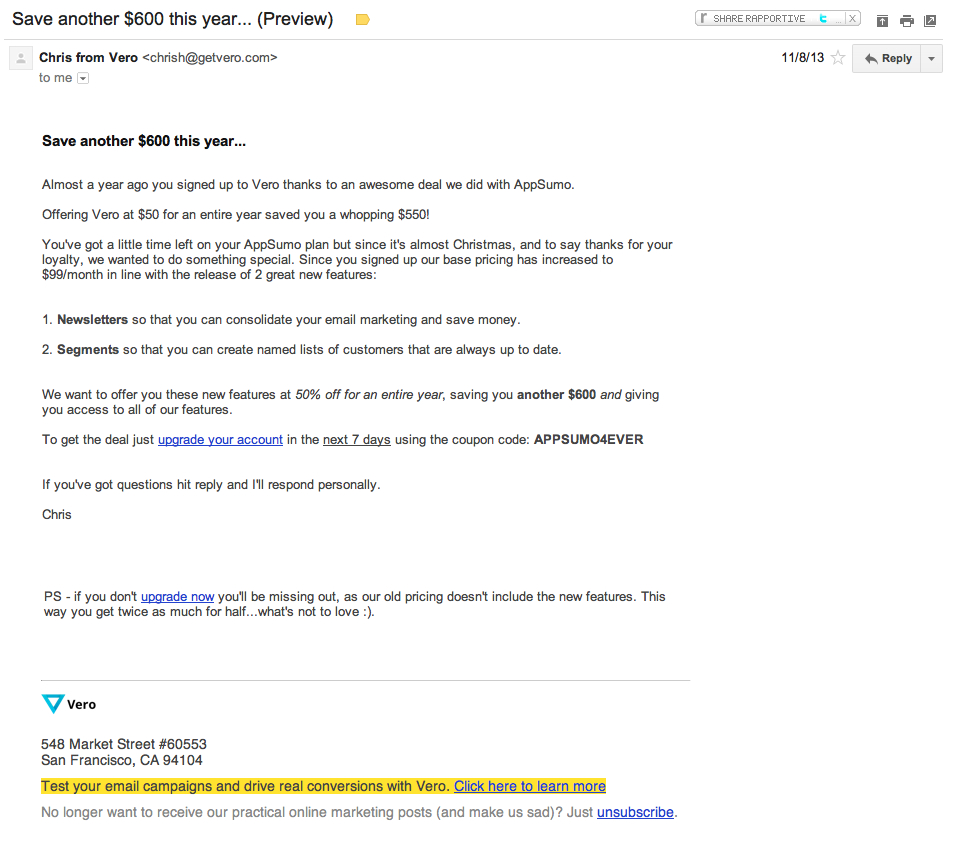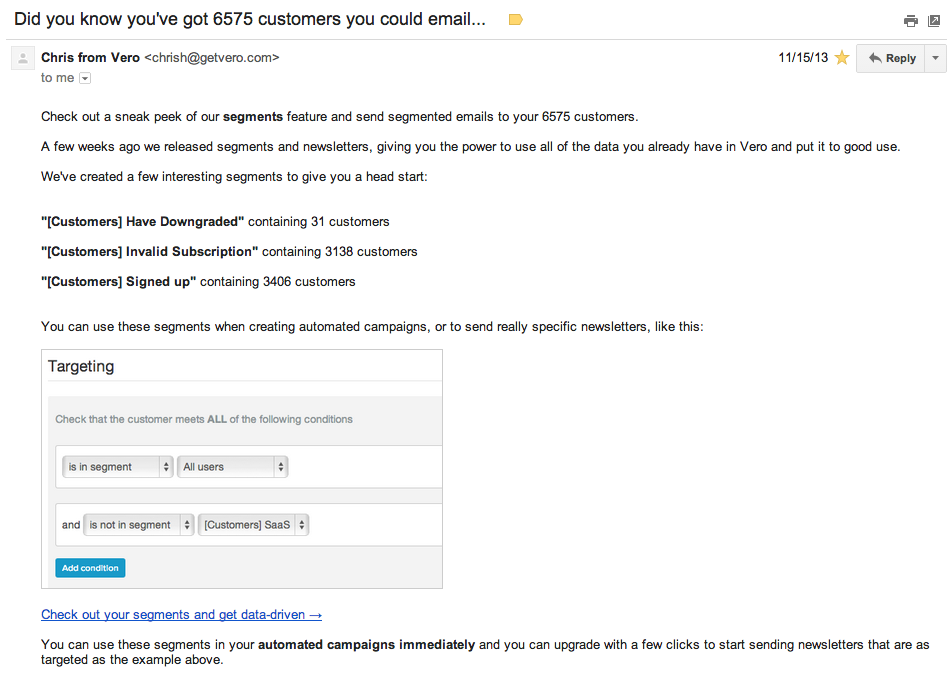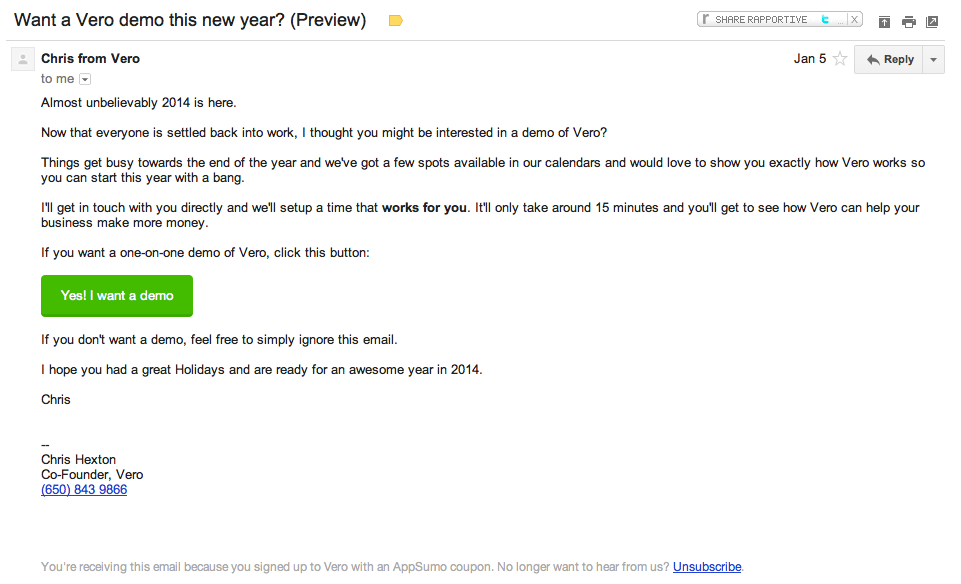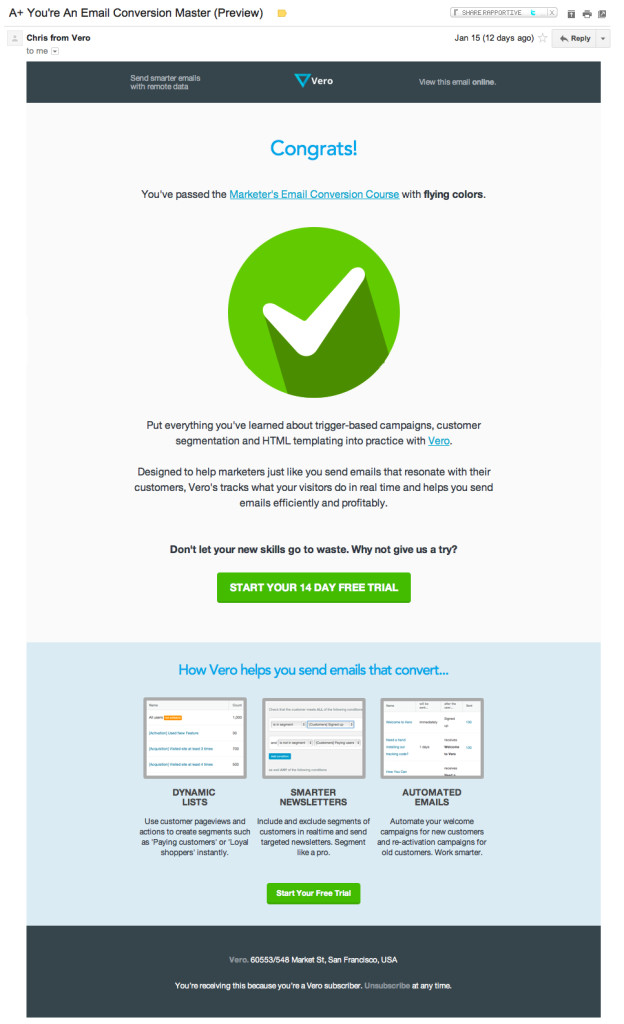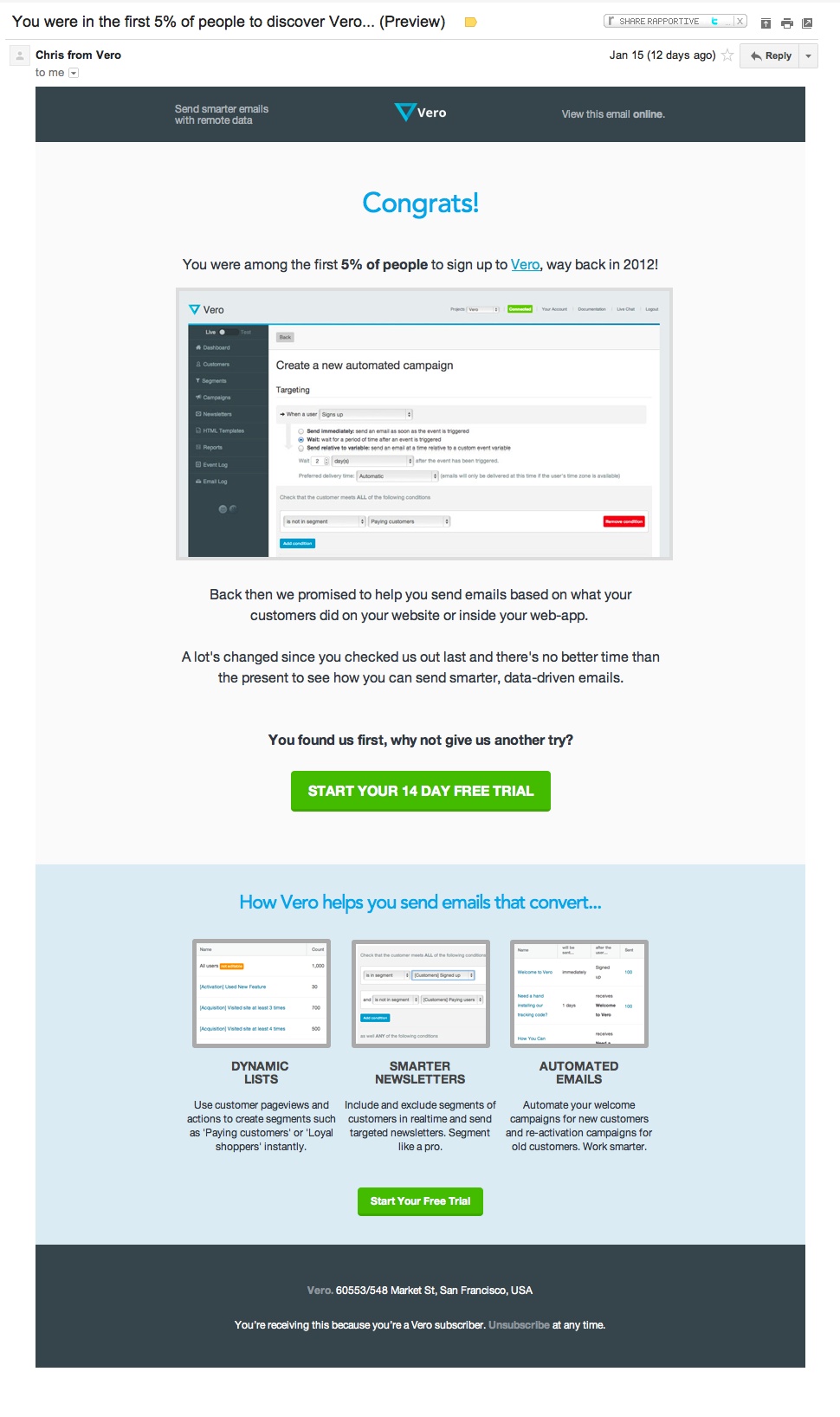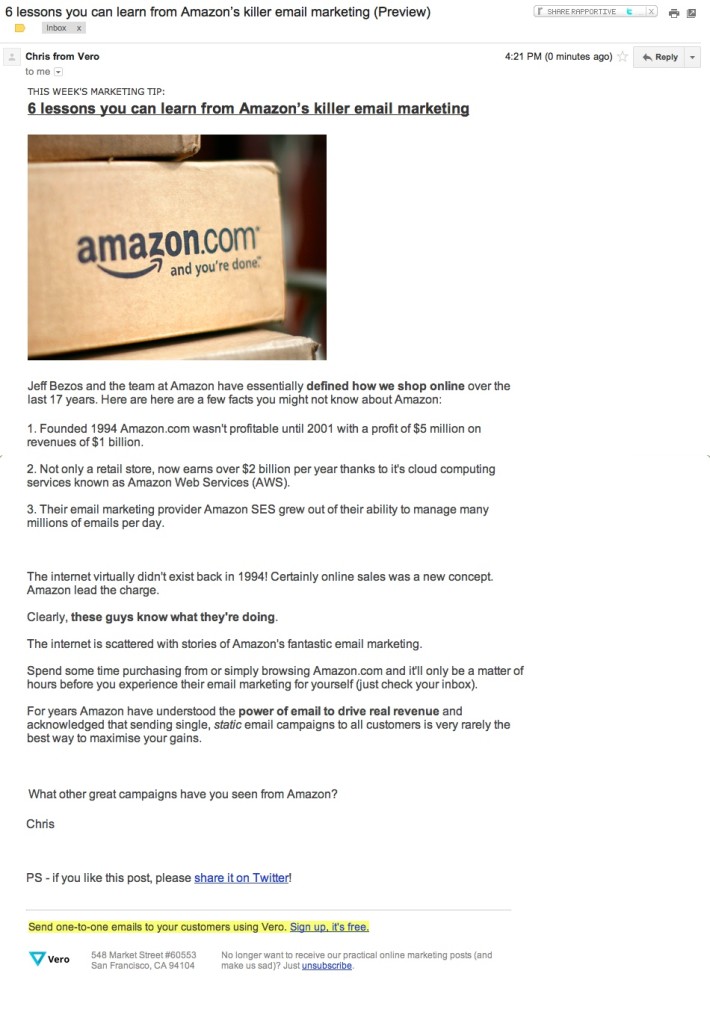 For SaaS vendors of any size and at any stage, email marketing – from newsletters to transactional messages – can be an amazing customer acquisition and retention tool.
For SaaS vendors of any size and at any stage, email marketing – from newsletters to transactional messages – can be an amazing customer acquisition and retention tool.
Nothing has replaced, displaced, or outpaced email as a super-effective medium to engage your audience – from prospects to customers – and it doesn’t seem likely to happen anytime soon.
No matter what social platforms pop-up, stick around, or go away, two things have remained true:
- It’s still better to own and control your list rather than relying on the social network to manage – and disable or disrupt on a whim – your ability to communicate with your customers
- Social Networks themselves rely heavily on email for on-boarding, to drive initial engagement, and to get you back to their platform. LinkedIn, Twitter, Youtube… they all have one thing in common: email marketing works really well for them.
But the days of the “email blast” are long-gone (though some less-than-clueful folks still use this archaic term)… in 2014, it’s all about segmenting your audience/customers/prospects and leveraging actual user behavior to drive your email marketing.
Which is why companies taking email marketing to the next level – like Vero – are super-exciting to me.
In fact, I met Vero’s co-founder Chris Hexton almost exactly one year ago and we’ve been friends ever since.
He recently told me how they got a 450% increase in conversions with some rather simple changes to their email marketing program.
I asked just how simple those changes really were – after all, he’s not just running a SaaS business but it’s an email marketing platform; what’s easy for him may not be easy for others – and he said they were easy.
I said prove it… a super-long, uber-detailed blog post or it didn’t happen.
Well, it happened and below is the post with the proof and all the glorious details.
I’ve got a few things to add in the afterword, but for now I’ll turn it over to Chris…
How Vero Used Email Segmentation to Increase SaaS Email Conversions 450%
Segmented your customer list recently?
…no?
Segmentation is the king of online marketing. As Lincoln shared a few weeks ago, you need to stop round-hole/square-pegging it with your email marketing – send your customers stuff that makes sense to them.
Over the last three months I’ve been particularly interested in newsletters (i.e. emails sent once, not triggered individually) and how these can be used to augment the behavioural emails we send at Vero, a SaaS email marketing product.
I asked myself: what clever ideas could we come up with to push the boundaries and improve our email marketing? After all, we specialize in data-driven email marketing so we better be damn good at it.
Background: what we send
The four main email ‘streams’ we think about at Vero are:
- Emails surrounding customer on boarding. The aim here is to turn customers from a free trial into a paying customer, with the focus being to get them to send an email through the Vero system. Once they do that, they’re usually hooked.
- Regular blog updates. At least once (usually twice) per week we send out a standard template featuring our latest blog post. This email is designed to get customers to read our blog and stay engaged with Vero.
- An educational course. We have pulled together the Marketer’s Email Conversion Course. This email series is designed to move customers from passive blog subscribers to trial customers.
- Random offers and updates. These emails target a specific goal that changes depending on where we feel there is an opportunity.
In October we analysed the campaigns that we were sending and realised we were reasonably strong on numbers 1 and 2 but relatively week on type 3 and extremely weak on type number 4.
As a whole the goal of our campaigns is to move customers from the start of the buying cycle to the end.
Here’s a rough visual representation of how we think about the campaigns I’ve mentioned above.
We realised that there was so much opportunity to get people into the top of our funnel as well as to move them through the funnel faster if we improved our own email marketing. This was an exciting realisation.
The Results
For the purpose of this article we’re going to focus predominantly on a single figure. It’s the same figure I looked at in October 2013 when planning out the next few months.
At that time, in October, the percentage of customers that visited our site from one of our email marketing campaigns and actually converted to the required goal (this includes both newsletters and triggered emails) was:
2%
That means that, in total, 2% of the people we messaged in October using an email marketing campaign took the desired goal. In most cases this goal (conversion event) is ‘Signed up for a free trial’ as that is definitely the focus of most of our emails.
Maybe 2% is good, maybe it’s bad…but, as this number encompasses every campaign we sent, it is a nice aggregate figure to look at over time and see how our email marketing approach has improved overall.
In October we wrote down the hypothesis that by breaking down our customer base into smaller segments we would be able to send email in a more targeted way and that this would lead to increased conversions. In doing this we figured we’d send virtually the same number of emails in total, ensuring we weren’t just blasting our customers day-in-day-out.
It turns out, we were right. Here’s that same statitistic in January 2014:
7.82%
**A 450% increase. **
Want to learn how we got 450% more customers to respond to our email campaigns and actually do what we wanted?
What is really interesting is looking at the volume of emails sent out over the last three months, on a per week basis. Although there are some clear fluctuations, the volume is certainly going up.
At first, our thought was that we figured that we had done what we said we wouldn’t and merely sent more emails to our subscriber base. We figured that perhaps this was the big driver of conversions.
However, breaking down the average number of emails received per subscriber per week shows this is incorrect.
Here we can see that the average number of emails sent per unique subscriber (that actually received any email at all) never went above 3 emails per week (which is my personal recommendation for most online SaaS businesses as an upper bound).
Even going back before September, the average hovers at around 2 per week.
This suggests it was not sheer volume that led to the awesome increase but an actual improvement in the quality and targeting of the emails we sent out over that period. By segmenting, things were no longer hit-and-miss. We could send the same number of emails as before with confidence that each email counts more than it ever has before.
A quick look at our data reveals that we now have over 54 total segments, with around 20 of these used weekly.
To learn how we’ve achieved these results, I reflected on the sorts of campaigns we sent over the last three months and pulled together the top 3 things we’ve learnt optimising email segmentation for a SaaS business.
The Top 3 Lessons
1. Send the right message to the right segment
Picking the right email or offer to send to the right group of customers is the essential point of segmentation and it makes a huge difference.
In September 2013 we released a new feature that allowed customers to use the data inside Vero to send newsletters, not just trigger-based email campaigns. We actually released the new feature as part of a pricing upgrade, giving customers the choice to unlock the new features on the new plans.
This was huge for us and many customers jumped on board right away but we wanted to continue to encourage those that didn’t to do so.
Rather than just sending the same email to our entire user base, we segmented out the customers that had not yet started using this feature. We observed that many of them had been extremely loyal, used the system multiple times per week for months yet didn’t necessarily send enough to put them near the top of their pricing tier. We wanted to reward these sort of customers whilst getting them to use our newsletters feature.
We realised that we could further segment into two groups.
In October 2012, Vero was featured on AppSumo. We had a deal that gave customers access to Vero for an entire year at a single (ridiculous!) price.
This meant that by November 2013 there was a swathe of active customers whose AppSumo offer periods were expiring immediately or in the next three months.
We really wanted to get these customers using newsletters and decided to send the following targeted offer to them:
This achieved three things:
- It got them using newsletters (great for our customer retention)
- It gave them a reward for their loyalty (free access to a new feature, furthering their happy experience with Vero)
- It got them to upgrade sooner from their AppSumo deal (great for Vero’s customer LTV)
Contrast this with the second segment. In this case we targeted active customers that already had access to the feature (had been part of the beta) but had not actively engaged with the newsletters feature at all. We sent them this campaign instead:
The goal of these two campaigns was ultimately the same: get customers to be engaged with Vero’s new feature.
The execution was entirely different and ensured the right customers got the most relevant message for them. It seems a no brainer when you read it here, but you’d be surprised how easy it is to overlook this sort of basic segmentation.
2. Use targeting, tone and style to avoid recipient fatigue
A mistake we had made pre-October 2013 was sending similar kinds of newsletters every time we emailed. The same format, the offer, just to an updated list of customers.
This was because we were lazy: we didn’t put enough effort into testing new approaches against individual customer segments.
The solution was to try new email styles, tones and change our calls to action to see what resonated best with customers.
Two of the emails we’ve sent over the last few months that illustrate this are below.
The first was inspired by a great campaign from the team at KISSmetrics.
This campaign targeted customers that had signed up for a free trial, had not taken any action inside Vero and had not become paying customers. This campaign was extremely successful: 4.6% of recipients booked a demo and, of these, 70% have now re-engaged and 40% already having converted to paying customers.
Another example, to a similar segment, was this email sent out in the lead up to Christmas and New Years:
This campaign is reminiscent of similar campaigns we had sent before, though we changed the CTA style and the template used. The conversion rate on this email was lower, with only 0.5% of recipients taking up the offer, but this was still good given the number of emails we sent.
This does highlight the danger in repetition and also reflects the nature of the call to action: customers had to directly put down money to take advantage of it (plus it was over the Holidays!)
Making customers feel special is always an effective tactic and inspired two of our latest campaigns.
The first was sent to customers that had completed the Marketer’s Email Conversion Course but had not converted. We included everyone from the last three months, as long as they’d finished the course more than week ago.
We used a similar tactic, inspired by a campaign from YouTube. Segmenting out a reasonably small number of customers that were amongst the first 5% of users to sign up to the Vero beta we sent this email:
Naturally this segment included some very old and rather unengaged customers, though most had regularly received our email newsletters. This campaign had a relatively low click rate of 2.8%, but of those who did click-through, 20% actually converted to a free trial. This was also an extremely interesting process, allowing us to get back in touch with some customers we had not spoken to since Vero was first launched (and, frankly, at that time it was a very rough diamond!)
These four campaigns, along with the rest you see across these five points, all focus on delivering a different message to targeted segments despite having the same goal: to get customers onboard a trial, engaged and paying.
By varying the offers, you reduce fatigue and keep recipients interested.
3. Automate what works
The final piece of the puzzle is being strict about automating those email campaigns that do work.
Trigger-based emails can be extremely powerful because of their context – they’re usually sent just after or before a user takes an action and this helps increase click-throughs and conversions.
Take, for example, Vero’s blog subscribers.
We observed that customers who had signed up to our blog newsletter and received one blog update were extremely likely to convert to paying customers in the long run. We had already automated a blog welcome email that went out when customers subscribed and found that this increased conversions nicely.
Based on observing the behaviour of this segment, we setup another email in the blog welcome series. We now send our highest converting blog post (about Amazon’s awesome email marketing two days after a user subscribes to the blog. It looks just like a normal blog update, but it’s known to work!
Since doing this we’ve seen 5% of customers convert to start a free trial directly after receiving this email. That is a lift of nearly 30% over just the single email in the series.
Here’s the email in question:
…further more, the ‘Want a demo?’ I mentioned above was so successful above that we’ve added this as an automated campaign two weeks after a subscriber joins the blog but doesn’t sign up for a free trial.
This is currently an experiment but it will be interesting to see whether the success of this email carries over to it’s automated version. We have high hopes for this campaign as it will give our team the chance to move people along the buyers’ journey much faster.
The trick here is to automate your email marketing campaigns when you’ve tested them an know they work. From there you can tweak and optimise timing, structure and the length of a series to see what generates the best results.
Why you can do this too
I’m aware that there is obviously a whole raft of factors that affect the various conversion points I’ve discussed here but I’ll take a 450% increase in trial signups any day.
Given we’ve done no significant A/B tests on the main site in this time (and any we have done have resulted in small uplifts) and our automated campaigns have remanned unchanged, it’s fair to say segmentation has certainly had an impact on the numbers, in fact it seems the only real driver.
The great news it that every SaaS business can do this. If you have a database of customers and track your critical lifecycle points (visits site, reads blog, views landing page, signs up, uses feature X, subscribes) then there is a ton of ways to slice this data – and that’s with only six data points!
Don’t get caught up trying to construct the perfect segments: instead recognise that you can do better than you are now. Create new segments that seem logical, test out some campaigns and reflect each month on what works.
If it does work, automate it! Then keep an eye on it.
Chris Hexton is co-founder of Vero and speaks Italian. You should follow him on AngelList or Twitter.
Afterword by Lincoln
Lincoln here again…
I’ve written a few things about how Email Marketing should be a core element of not just your customer acquisition but also your retention strategy… and Chris sharing what he did should hopefully help you understand just how important – and potentially lucrative – email marketing really is.
Here are some of my most relevant blog posts on the subject of using Email to grow your SaaS company:
- 5 Rules for SaaS Email Marketing and Transactional Messages
- Autoresponders are Dead (or… what’s the ideal email follow-up sequence?)
- Growth Hack: Warm-Up Your Leads Before You Email Them
- SaaS Marketing: 21 Growth Hacks to Test Today (specifically #14 and #15)
- SaaS Customer Onboarding: 3 Steps to a Successful Welcome Email
- 22 Ways to Reduce Churn with Growth Hacking (8, 12, 15, 16, and 17 are email-related)
What Chris told us, and all of those posts I just linked to, should help you get a big bump the success of your email marketing initiative.

